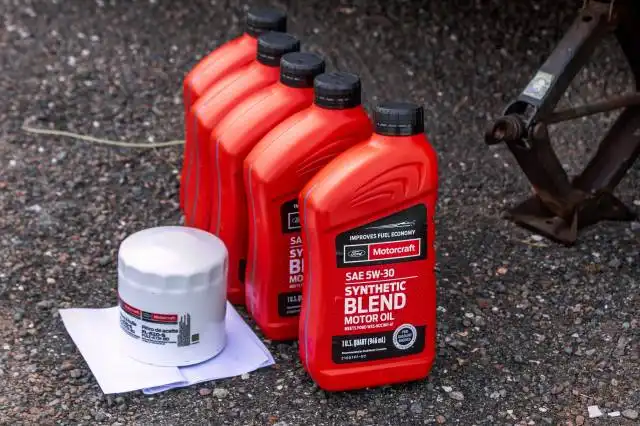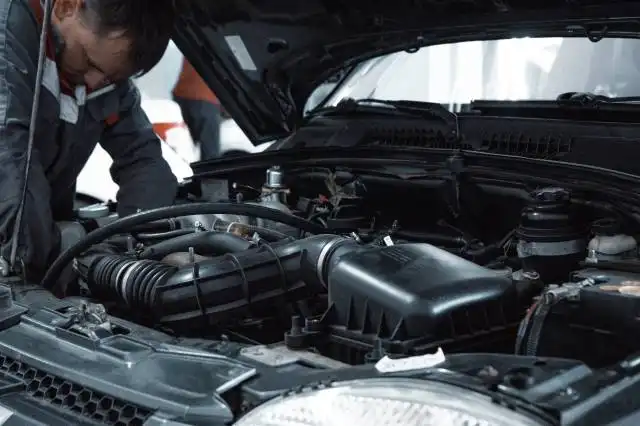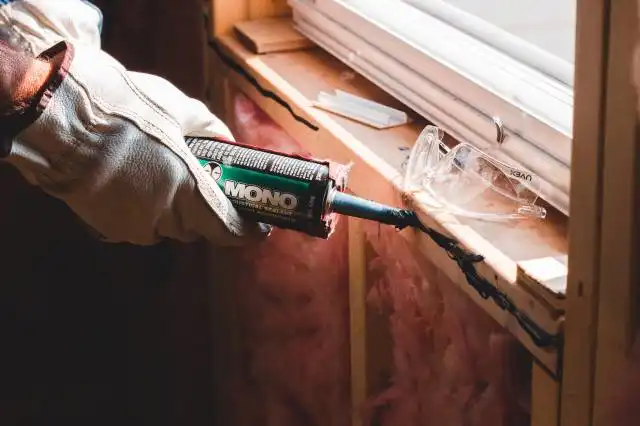Start an Emission Testing
Breath of Fresh Air: Melding Green Advocacy and Entrepreneurship
| Updated


EMISSION TESTING
Emission Testing can be a breath of fresh air for those new entrepreneurs with a green thumb. It is essentially a business that verifies whether vehicles or industries are releasing an acceptable level of pollutants into the environment. You'll be saving the planet, one exhaust pipe at a time! So, buckle up, get your testing equipment ready, and dive into the exhilarating world where mechanics, science, and environmental advocacy collide spectacularly.
Jump to Business Plan
RELATED BUSINESS IDEAS
Browse ALL Cars & Transportation Solutions Business Ideas
Discover Your Perfect Domain
Unlock the door to your online success with our hand-picked selection of premium domain names. Whether you're starting a new venture or rebranding an existing one, the right domain can set the tone for your digital presence. Browse through our curated list, each with its unique potential to enhance your brand's visibility and credibility.
EMISSION TESTING MINI BUSINESS PLAN
This a quick reality check to help you identify the strengths and weaknesses of your business concept before you dive in.
Business idea: Emission Testing Service
Expected Percent Margin:
- Gross Margin: 50-60%
- Net Profit Margin: 10-15%
Earnings Expectations:
- Daily Earnings: $100 - $200
- Weekly Earnings: $700 - $1400
- Monthly Earnings: $3000 - $6000
- Annual Earnings: $36,000 - $72,000
Actions to Hit Those Numbers:
Invest in Equipment:
- Initial Investment: Need $10,000 - $30,000 to buy high-quality emission testing equipment.
License and Certification:
- Accreditation: Obtain necessary local and state certifications and licenses for emission testing.
- Staff Training: All staff should have certified training in emission testing.
Marketing and Customer Acquisition:
- Website and Online Presence: Invest in SEO and online ad campaigns to attract online consumers.
- Local Partnerships: Partnering with local garages or dealerships to get business referrals.
Operations:
- Service Capacity: Strive to complete 15-30 emissions tests per day (Assuming $10-$20 testing fee).
- Working Hours: Depending on the rules in your area, aim to operate 5-6 days a week, 8-10 hours a day.
Cost Control:
- Rent and Utilities: Budget these to be no more than 10% of your expected monthly sales.
- Maintenance: Budget for monthly maintenance of testing equipment.
Please remember these are general estimates and may vary depending on location, regulations, and market demand. Always consult with a financial advisor for personalized advice.
NOT WHAT YOU HAD IN MIND? Here are more ideas



Browse ALL Cars & Transportation Solutions Business Ideas
Grab Your Business Website Name
Before you get caught up in the whirlwind of setting up your business, invest in a domain name. It's a small but significant step that lays the foundation for your brand and makes it easier for customers to find and trust you. Just like you wouldn't build a house without securing the land first, don't build a business without securing your domain name.
"Why? Can't that wait?" Here's why it shouldn't
Step 1: Determine if the Business is the Right Endeavor
Breakdown of Startup Expenses
Before starting an emission testing business, it is important to understand the startup costs associated with the venture. These costs can include renting or purchasing a facility, purchasing necessary equipment, obtaining permits and licenses, and hiring staff. It is also important to research the competition in the area to determine if there is enough demand for the services offered. Additionally, it is important to consider the cost of marketing and advertising to ensure the business is successful.
Breakdown of Ongoing Expenses
Once the business is up and running, there are ongoing expenses to consider. These can include the cost of supplies, such as testing kits and other materials, as well as the cost of labor, such as employees and contractors. Additionally, it is important to consider the cost of insurance, taxes, and other fees associated with running the business. It is also important to consider the cost of maintaining the equipment and facility, as well as the cost of marketing and advertising to ensure the business remains successful.
Examples of Ways to Make Money
There are several ways to make money with an emission testing business. One way is to charge a fee for each test performed. Additionally, the business can offer additional services, such as consulting or training, to increase revenue. The business can also offer discounts or promotions to attract more customers. Finally, the business can partner with other businesses to offer bundled services and increase the customer base.
Step 2: Name the Business
- Brainstorm potential names. Start by writing down any words or phrases that come to mind when thinking about the business. Consider the type of business, the services it provides, and the target audience.
- Research the names. Once a list of potential names has been created, research each one to make sure it is not already being used by another business. This can be done by searching online or checking with the local government.
- Consider the domain name. When choosing a name, it is important to also consider the domain name. This is the website address that customers will use to find the business online. If the desired domain name is not available, it may be necessary to choose a different name.
- Ask for feedback. Once a few potential names have been chosen, ask friends and family for their opinion. This can help to narrow down the list and ensure that the chosen name is one that resonates with the target audience.
- Make sure the name is memorable. The name should be easy to remember and should stand out from the competition. It should also be easy to pronounce and spell so that customers can easily find the business online.
Step 3: Obtain Necessary Licenses and Permits
Research Local Regulations
It is important to research local regulations to ensure that the business is compliant with local laws. Depending on the location, there may be different regulations and requirements for emission testing businesses. It is important to research the local laws and regulations to ensure that the business is compliant. Additionally, it is important to research any local permits or licenses that may be required to operate the business.
Obtain Necessary Licenses and Permits
Once the necessary research has been done, the next step is to obtain the necessary licenses and permits. This may include obtaining a business license, a permit to operate the business, and any other licenses or permits that may be required. Additionally, it is important to ensure that the business is properly insured. This may include liability insurance, property insurance, and any other insurance that may be required. It is important to ensure that all of the necessary licenses and permits are obtained before the business begins operating.
Step 4: Find a Suitable Location
Once you’ve determined that starting an emission testing business is the right endeavor, and you’ve named your business, the next step is to find a suitable location. When choosing a location for your business, there are a few key considerations to keep in mind. First, you’ll want to make sure that your business is located in an area that has a need for emission testing services. This could include areas with a high population of vehicles, or areas with strict emissions regulations. Additionally, you’ll want to make sure that your business is located in an area with good transportation links, as this will make it easier for customers to access your services. Finally, you’ll want to make sure that your business is located in an area with a good customer base. This could include areas with a high population of businesses that require emission testing services, or areas with a high population of individuals who own vehicles.
Finding a Suitable Location
Once you’ve identified the key considerations for choosing a location for your business, the next step is to find a suitable location. To do this, you’ll want to start by researching potential locations in your area. This could include looking at local zoning laws, researching the local population, and researching the local competition. Additionally, you’ll want to consider the cost of renting or buying a space for your business. Finally, you’ll want to consider the potential for growth in the area. This could include researching the potential for new customers, or researching the potential for expanding your business in the future.
Once you’ve identified a suitable location for your business, the next step is to secure the space. This could include renting or buying the space, or negotiating a lease agreement with the landlord. Additionally, you’ll want to make sure that the space is suitable for your business. This could include making sure that the space has the necessary utilities, such as electricity and water, and making sure that the space is large enough to accommodate your business. Finally, you’ll want to make sure that the space is in compliance with local zoning laws and regulations.
Step 5: Purchase Equipment and Supplies
The fifth step in starting an emission testing business is to purchase the necessary equipment and supplies. This includes a vehicle emission testing machine, a computer, and a printer. It is also important to have a variety of tools and supplies to properly diagnose and repair any issues that may arise. This could include a scanner, a diagnostic tool, a fuel pressure gauge, a vacuum gauge, and a variety of other tools and supplies. Additionally, it is important to have a variety of parts on hand to make any necessary repairs. This could include spark plugs, oxygen sensors, fuel injectors, and other parts.
Where to Purchase Equipment and Supplies
When purchasing equipment and supplies for an emission testing business, it is important to shop around for the best prices. Many automotive parts stores and online retailers offer a variety of parts and supplies at competitive prices. Additionally, it is important to look for deals and discounts from manufacturers and suppliers. This can help to reduce the overall cost of starting the business. It is also important to consider the quality of the parts and supplies that are being purchased. This is to ensure that the parts and supplies will be able to withstand the wear and tear of the emission testing process.
Cost of Equipment and Supplies
The cost of equipment and supplies for an emission testing business can vary greatly depending on the type of equipment and supplies that are being purchased. Generally, the cost of the equipment and supplies can range from a few hundred dollars to several thousand dollars. Additionally, it is important to consider the cost of ongoing maintenance and repairs for the equipment and supplies. This can add to the overall cost of starting the business.
Step 6: Market the Business
Once the business is up and running, it is important to market it to potential customers. There are several strategies for advertising and promoting an emission testing business. One of the most effective ways to reach potential customers is through online advertising. This can include creating a website, utilizing social media platforms, and running targeted ads on search engines. Additionally, it is important to create a presence in the local community. This can be done through attending local events, sponsoring local teams, and offering discounts to local businesses.
Developing a Brand
In order to stand out from the competition, it is important to develop a unique brand for the business. This includes creating a logo, slogan, and mission statement that reflect the values of the business. Additionally, it is important to create a consistent look and feel for all marketing materials. This includes creating a website, business cards, and other promotional materials that reflect the brand.
Networking
Networking is an important part of marketing a business. This includes attending industry events, joining professional organizations, and connecting with other businesses in the area. Additionally, it is important to build relationships with local government officials, as they can be a valuable source of referrals.
Establishing Partnerships
Establishing partnerships with other businesses is another way to market the business. This can include partnering with auto repair shops, car dealerships, and other businesses that may have customers in need of emission testing services. Additionally, it is important to establish relationships with suppliers, as this can help to reduce costs and increase profits.
Step 7: Hire Employees
When it comes to hiring employees for an emission testing business, it is important to find individuals who are qualified and knowledgeable in the field. The best way to do this is to post job openings on job boards and websites that specialize in automotive services. Additionally, it is important to conduct thorough background checks and interviews to ensure that the potential employee is a good fit for the business. It is also important to make sure that the employee has the necessary certifications and licenses to perform emission testing.
Benefits of Hiring Employees
Hiring employees can be beneficial for an emission testing business in a variety of ways. First, it can help to free up some of the owner’s time so that they can focus on other aspects of the business. Additionally, having employees can help to increase the efficiency of the business and allow for more customers to be served in a shorter amount of time. Finally, having employees can help to increase the credibility of the business and make it more attractive to potential customers.
Step 8: Establish Policies and Procedures
When establishing policies and procedures for an emission testing business, it is important to consider the safety of the employees and customers, as well as the environment. Policies should be created to ensure that all safety protocols are followed and that the business is in compliance with all local, state, and federal regulations. Additionally, procedures should be created to ensure that the business is running efficiently and that all customer needs are met.
Examples of Policies and Procedures
When creating policies and procedures for an emission testing business, it is important to consider the following:
Safety: Policies should be created to ensure that all safety protocols are followed, such as wearing protective gear and using the proper equipment. Additionally, procedures should be created to ensure that any hazardous materials are handled properly and safely.
Compliance: Policies should be created to ensure that the business is in compliance with all local, state, and federal regulations. Additionally, procedures should be created to ensure that all customer needs are met and that the business is running efficiently.
Quality Control: Policies should be created to ensure that all tests are conducted correctly and that the results are accurate. Additionally, procedures should be created to ensure that any issues are addressed quickly and efficiently.
Customer Service: Policies should be created to ensure that all customer needs are met and that customer satisfaction is a priority. Additionally, procedures should be created to ensure that customer complaints are addressed quickly and that customer feedback is taken into account.
Implementing Policies and Procedures
Once the policies and procedures have been established, it is important to ensure that they are implemented correctly. This can be done by providing employees with training and ensuring that they understand the policies and procedures. Additionally, it is important to ensure that the policies and procedures are enforced consistently.
Step 9: Keep Records
Keeping records is an important part of running any business, and emission testing businesses are no different. It is important to keep records of all emissions tests that are performed, as well as any repairs or maintenance that is done on the vehicles being tested. Additionally, it is important to keep records of any fees that are charged for the tests, as well as any payments that are received for the services. This will help to ensure that the business is operating in a legally compliant manner, and will also help to ensure that the business is profitable.
Record Keeping Software
There are a variety of software programs available that can help with record keeping for emission testing businesses. These programs can help to keep track of all of the tests that are performed, as well as any repairs or maintenance that is done on the vehicles being tested. Additionally, they can help to keep track of any fees that are charged for the tests, as well as any payments that are received for the services. This type of software can be invaluable in helping to ensure that the business is operating in a legally compliant manner, and can also help to ensure that the business is profitable.
Importance of Record Keeping
Record keeping is an essential part of running any business, and emission testing businesses are no exception. Keeping accurate records of all emissions tests that are performed, as well as any repairs or maintenance that is done on the vehicles being tested, is essential for ensuring that the business is operating in a legally compliant manner. Additionally, keeping accurate records of any fees that are charged for the tests, as well as any payments that are received for the services, is essential for ensuring that the business is profitable. Without accurate records, it can be difficult to determine the profitability of the business, which can lead to financial difficulties.
EXPLORE MORE CATEGORIES
Browse ALL Business Idea Categories
TAKE THE NEXT STEPS










